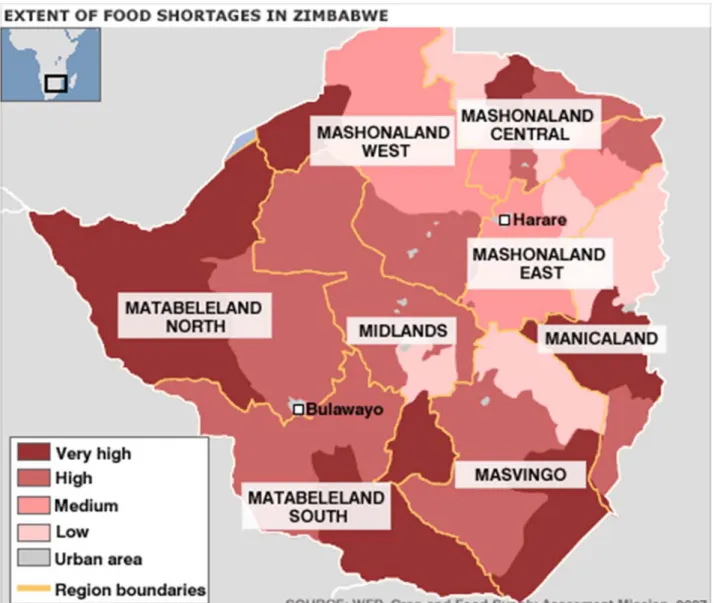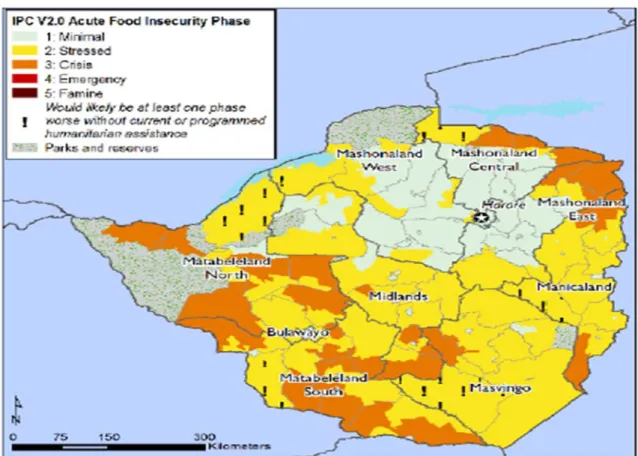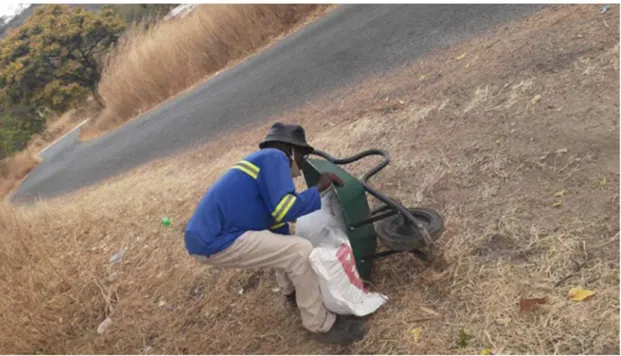This study sought to evaluate a Cash Transfer Program to reduce ultra-poverty in female-headed households in Nganunu Village, Zimbabwe. These techniques were used to gain insights into the experiences of the female-headed households in the village of Nganunu.
Introduction
Background to the study
Zvishavane District in Zimbabwe, like the rest of the country, also faces high levels of poverty in female-headed households. This study sought to assess the success rate of the cash transfer program in meaningfully and practically addressing poverty in rural women-headed households.
Cash Transfers
Types of Cash Transfers
There are mainly three types of cash transfers which are a Conditional Cash Transfer (CCT) program, Unconditional Cash Transfer (UCT) program and Basic Agricultural Assistance, which in other contexts is known as control program (AIR, 2013; Thome et al., 2014; Handa et al., 2016). The third cash transfer is called Basic Agricultural Assistance, which in other contexts is known as the control program, this is the cash transfer in which research is being stopped (Thome et al., 2014; American Institutes for Research, 2013; Handa et al., 2016).
Research problem
The ADRA-Zimbabwe cash transfer was there to revive the agricultural activities of female-headed households. Study title: Evaluation of a cash transfer program in reducing poverty in female-headed households in Nganunu village, Zimbabwe.
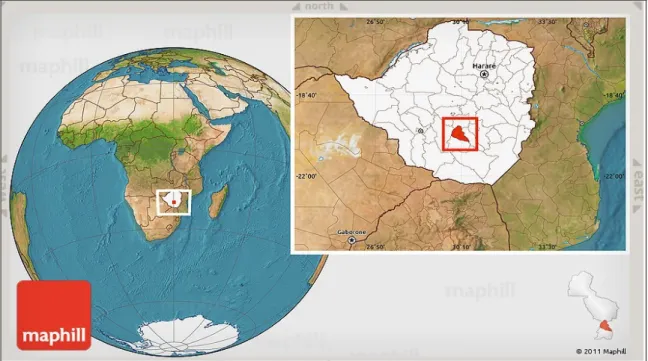
Significance of the study
Research Questions
Objectives of the study
Main Objective
Specific Objectives
Methodology
- Study Area
- Research Design
- Population
- Sampling Procedure
- Data Collection Strategy and Procedures
- Data Analysis
Gate guards were there to allow the researcher access to the study area. FGDs consisting of 5 participating members were conducted until the researcher reached a point of data saturation.
Conceptualisation of key terms
Ethical Considerations
The researcher submitted a research protocol to the Northwestern University ethics committee (Protocol Number: NWU-00802-21-A7) and the study was approved as a low-risk study. While compiling the research findings, the researcher remained objective and ensured that the results were true reflections of the study area.
Limitations of the study
The researcher also followed the World Health Organization's COVID-19 regulatory guidelines for physical distancing and wearing a mask when speaking with participants. During the conduct of the study the researcher ensured that the participants were properly informed and the interviews were done on a voluntary basis or with voluntary participation, without any harm to the participants, and they were informed that their confidentiality and privacy is protected.
Structure of the study
Review of Literature
Introduction
Brief history of Zimbabwe
The global perspectives of gender in society
As a result of some of these injustices, women become poorer compared to their male counterparts (Touray, 2016; UN Women. 2017). With such a system, it normally becomes difficult to address women's concerns in a fair and equitable manner.
State of poverty in Zimbabwe
With this food shortage looming, traders are taking advantage of the situation, causing the market price of many commodities, especially basic daily necessities, to rise unjustifiably sharply (Handa et al., 2016; MCCTP, 2016). To prevent hunger, adverse coping mechanisms such as prostitution, child labor and school dropout become common experiences (Handa et al., 2016; MCCTP, 2016).
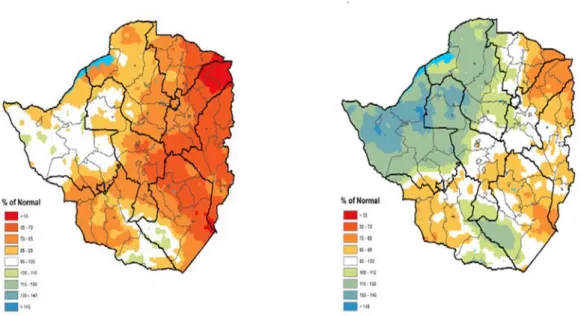
Female-headed households in Zimbabwe
When traders "unreasonably" increase their prices during the off-season, there is an inadvertent food crisis in many households, especially female-headed households. Glazebrook, Noll, and Opoku (2020) suggest that female-headed households are more likely to earn less income in agriculture than male-headed households, making the feminization of poverty a reality.
Women and Agriculture in Zimbabwe
Eighty percent of women live in communities where they account for 61 percent of farmers and provide 70 percent of the workforce (Touray, 2016, FAO, 2015). In the Commercial Farmers' Union (CFU), women make up only 8.6% of members, reflecting the low percentage of women who own large farms.
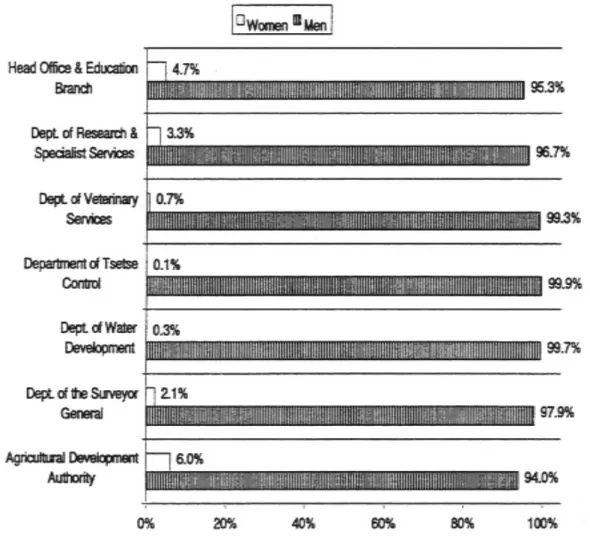
Policy, Gender and Poverty within the Zimbabwean Context
- The Agricultural, Technical and Extension Services (AGRITEX) policy
- The Fast Track Land Reform policy
- United Nations Sustainable Development Goals (SDG) policy
On average, female-headed households own 2.1 acres less farmland than male-headed households. This is an indication of different spending choices between female and male heads.
Conclusion
The implication is that female-headed households in rural areas tend to direct a greater proportion of their income towards food expenditure compared to male-headed households. Therefore, it is vital that policies targeting food and food security like AGRITEX support women's idea of getting more land as more land would mean a better harvest for mostly female-headed households.
Introduction
Social protection as a mechanism to combat social injustices
Therefore, social protection policies must strike a balance between measures designed to prevent shocks and the overall economy of the country. For social protection to occur in most countries, deep-rooted inequalities between the privileged and the marginalized that characterize social structures must be addressed (Miroro, 2016) and factors such as sex, race, age, culture or religion must not be problem. that prevent an individual from accessing and accumulating resources (Touray, 2016).
Definition of a cash transfer
- Cash transfers as a social protection strategy
BolsaFamilia is one of the world's largest conditional cash transfer programs in existence, with 13.8 million poor households benefiting from it (Adato & Hoddinott, 2018). The cash transfer's mandate was to merge existing social assistance programs, reduce administrative costs and expand eligibility while reducing poverty.
Poverty and household expenditure analysis
The analysis of household expenditure runs on the premise of evaluating the consumption and well-being of a country's population (Rubhara et. al., 2020; FAO, 2017). Furthermore, the household expenditure analysis uses food, education, health, agricultural inputs and durable goods as indices to indicate poverty (Mignouna et. al., 2015).
Benefits of cash transfers
- Cash transfers as a safety net in farming communities
- Cash transfer and poverty reduction
- Cash transfers helping women’s decision making in poverty alleviation
Promiscuity among young women in Kenya also decreased during the period they received their cash transfers (Handa et al., 2015; Adato & Hoddinott, 2018). Women's decision-making power has increased more broadly in household expenditure, as the cash transfers have enabled them financially to manage their own welfare (Nyathi et al., 2017; Handa et al., 2016, AIR, 2015).
Impacts of cash transfers on household head
Touray (2016) and Glazebrook (2020) also support the idea that most resources are owned by men and women, who are most of the time at the mercy of the patriarchal system. Therefore, the emergence of cash transfers in Ethiopia showed that women who received a financial injection began to live independently, which greatly helped them with issues of physical abuse, as they no longer relied on men for survival (Lumbasi, 2018).
Cash transfers reducing inequalities
However, in most cases, there were no significant differences between the indicators of male-headed and female-headed households to draw definitive assumptions about the impact of gender-headedness (Adato & Hoddinott, 2018; AIR; 2015).
Challenges faced in implementing cash transfers
- Conditionality attached to Cash Transfers
- Cash transfers only targeting a small portion of the poor people
- Power structures within households and the utilisation of Cash Transfers
- Efficiency of Cash transfers to reduce poverty
- Perceptions attached by beneficiaries of the Cash transfers
- Cash transfers failing to achieve the desired outcomes
- Politicisation of the Cash Transfers
- Practices that can help strengthen the implementation of cash transfers
- Targeting mechanism
- Termination of benefits as a criterion of reducing mismanagement of the fund
For example, in Zambia, remittances only targeted 10 percent of the poor, leaving many vulnerable people feeling excluded and segregated (Miller et al., 2017). Moreover, there was still a lack of empirical literature on the efficient management of money transfers (Catubig et al., 2015).
Conclusion
Therefore, ADRA-Zimbabwe cash transfers should have a clear method to target women-headed beneficiaries to avoid including those who do not need assistance for the smooth running of the project in poverty alleviation among women-headed households in Nganunu. village. Therefore, it is important for the ADRA-Zimbabwe Cash Transfer Program to implement this in order to run a successful poverty alleviation project among female-headed households in Nganunu Village, Zvishavane.
Conceptual Framework
- Introduction
- Basic Tenets of feminisation of poverty Concept according to Diane Pierce
- Basic tenets of social protection
- Feminisation of poverty
- Origins of feminisation of poverty
- Feminisation of poverty in developing countries
- Feminisation of poverty and gender mainstreaming in Zimbabwe
- Weaknesses of the feminization of poverty Concept
- Social Protection Perspective
- What is social protection?
- Utilising social protection to improve livelihoods
- Developed communities’ view of social protection
- Introduction of social protection to developing nations
- Categories of social protection
- Cash transfers as a tool for social protection in female-headed households
- Conclusion
In developing countries, social assistance programs traditionally comprise a significant part of social protection (Cook & Kebeer, 2009). Remittances as a social protection tool and policy framework aim to reduce poverty and vulnerability among female-headed households (Handina, 2010; AIR, 2014).
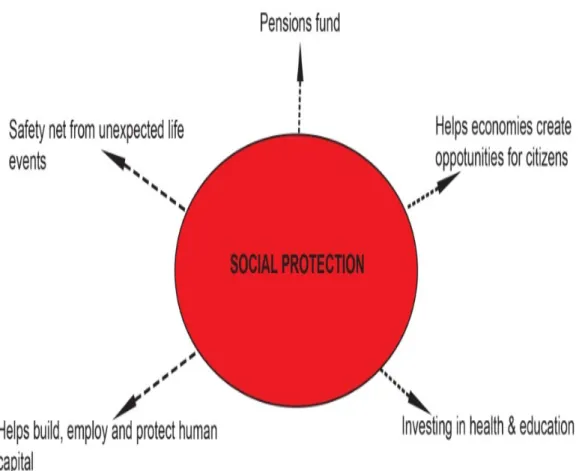
Research Methods and Methodologies
Introduction
The article was more interested in highlighting the influence that socio-institutional conditions and political factors have on the people receiving the money transfers. Although Handina (2010) tried to use a mixed method in his early research on money transfers in Sakubva, his analysis was more interested in numbers than the qualitative aspect.
Linking the conceptual framework to Methodology
The study used in-depth interviews, participant observation and focus group discussions, these three methods enabled the researcher to get a better perspective of cash transfer as a tool for poverty alleviation. Therefore, focus group discussions and in-depth interviews helped to tap personal views on the importance of cash transfers in alleviating ultra-poor poverty in female-headed households in Nganunu village, Zvishavane.
Zvishavane Rural Map
In terms of methodology, the use of a phenomenological research design further explores aspects of the role of remittances in meeting the needs of female-headed households in the farming community of Nganunu. Therefore, this study provides an analysis of poverty levels among female-headed households in Zimbabwe and the contribution of ADRA-Zimbabwe's Basic Agricultural Assistance Program to providing some relief to reduce poverty.
Research Design
Drought is a common occurrence in Zvishavane and is now affecting many people in this area. Most families have low yields that are too little to feed their families (ZimVac, 2017; WFP, 2015; Thome et. al., 2014). Zvishavane, like other rural areas in Zimbabwe, has a high rate (±95 percent) of youth unemployment, child-led households, pensioners, chronically ill and female-led households (ZHRC, 2020; Rubhara et. al., 2020; ZimVac, 2017 ; Thome et al., 2014).
Population
Sampling Procedures
The gatekeepers were familiar with the beneficiaries of the ADRA cash transfer program and the program itself. The leaders helped establish trust between the researcher and the participants who consented to the research.
Data Collection Instruments
- In-depth Interviews
- Focus Group Discussions (FGDs)
- Observation
The use of key informants helped the researcher to examine the topic in depth and the perceived personal view of the key informants. Key informant responses also helped provide data on the challenges ADRA-Zimbabwe faced in implementing cash transfers for female-headed households.
Data Analysis
Subcategorization and coding helped develop data models which the researcher used to understand the phenomenon under question (Mayring, 2000; Kumar, 2011). The researcher had to repeatedly ensure that the data was consistent throughout the research.
Research Ethics
In all of this reporting, participants will not be personally identified and this study is a one-off study, so the data will not be reused.
Limitations of the study
- Validity and Trustworthiness of Data
The researcher selected a pilot group of 5 individuals from the target population to test the reliability of the interview questions. In addition, to determine the validity of the research instruments, the researcher obtained the opinions of experts in the field of study, especially lecturers.
Conclusion
The purpose of pilot testing was to make sure that each respondent understood the interview questions asked and to make sure that there was no difficult question to be left out to prevent miscommunication between designed questions with pilot test respondents.
Introduction
This chapter will begin by describing the demographic characteristics of the participants and continue to present and discuss the themes that emerged from the focus group discussions, participant interviews, and key informant interviews.
Demographic Characteristics of Participants
With this, one can conclude that the cash transfer program has ensured the sustainability of the agricultural activities for female households. The main objective of the study was to explore the Basic Agricultural Assistance Cash Transfer Program in reducing poverty in female-headed households.
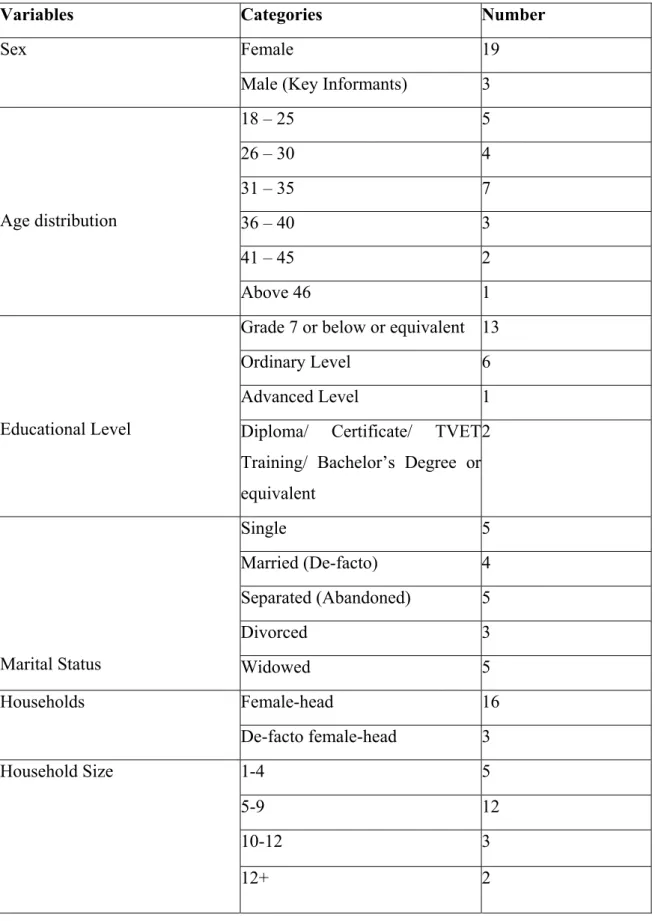
The experiences of FHHs in accessing Cash transfers in the Agricultural Assistance
- The failure of the state to meet the needs of female-headed households
- The ADRA cash transfer as an Alternative Social Protection in the gap created by
- Grassroots’ involvement of Village Committees in the selection of beneficiaries 93
- Accessing Agricultural inputs timeously
- The ADRA cash transfer card as a tool to reduce food shortages
- Female-headed households empowered to improve Agricultural production
- Improving household income security and Expenditure through the ADRA cash Card
- Cash transfers and Social Cohesion amongst rural women
- The benefits of cash transfers over in-kind donations as a social protection system
Challenges faced by beneficiaries of ADRA-Zimbabwe cash transfer
- Cultural and Patriarchal norms which deter female-headed households from
- Cash transfer Program targeting a small portion of the community
- Cash transfer not adequate for large families
- Accessing markets during the Covid-19 Lockdowns
- Conditionality placed on the Cash Transfer Card
- The effects of lack of manpower on farm productivity lack of manpower
- Inadequate money for purchasing inputs
- Female-headed households having too many dependants
Most participants interviewed felt that the amount of the cash transfer should be increased. The return I get I take a percentage and give to the owner as rent of the land" (Focus group discussion No.2, February 2021).
Practices that the ADRA-Zimbabwe program can implement to reduce poverty in female-
- Inter-sectoral collaboration between government and donors
- Female-headed households need training for new skills
- The ADRA cash transfer should not create a dependency to its beneficiaries
- Cash transfer Programs to target more vulnerable beneficiaries
- Government should create policies that are gender sensitive
The researcher also found that in order to successfully reduce poverty in Nganunu village, ADRA-Zimbabwe, they need to have a clear timeline for the completion of benefits in order to give cash transfers to other members of the society even to the societies of others. ADRA-Zimbabwe should incorporate a practice whereby they end benefits once these female head beneficiaries have projects that can support them in the future and channelize cash transfers to other village members in need these benefits.
Conclusion
Policies must be gender sensitive to avoid women and children's rights being violated (ZimVac, 2017; FAO, 2015). Women should be allowed to inherit their husband's land in particular, in rural Zimbabwe where the land is governed by traditional cultural legislation that alienates women (Horrell & Krishan, 2007).
Conclusion and recommendation
Introduction
This chapter explains the research design and methods used to investigate the utility of cash transfers in reducing poverty in female-headed households. While the researcher concluded the seventh chapter by summarizing the findings of the study and making recommendations on how best to improve the cash transfer policy.
Core Argument
Chapter three was used to discuss how cash transfers were managed and the challenges they faced in their implications. Chapter five discussed the research methods and methodology used to explore how remittances reduce poverty.
Reflection on Key Issues
The key findings of the research according to these research questions are summarised
- The experiences of female-headed households in accessing Cash transfers in the
- Challenges faced in the ADRA cash transfer program
- Practices that can be implemented by ADRA-Zimbabwe program to reduce poverty
Empirical findings of the study showed that the money transfer between ADRA and Zimbabwe enabled the female heads in the village of Nganunu to purchase agricultural inputs, which in turn enabled female headed households to support themselves. The results showed that the nutritional value of families in Zvishavane had improved thanks to the ADRA-Zimbabwe shopping cards.
Recommendations
Additionally, it helps cash transfer officials to measure success in achieving the goal of reducing poverty among female-headed households in Nganunu village through the Cash Transfer program. With gender-sensitive policies in the agricultural sector, it is easy to improve the poverty status of female-headed households, as policies will seek a better way to address poverty affecting women in development.
Implications for existing conceptual framework
The study provides a more detailed understanding of how the feminization of poverty and the social protection perspective helped to further understand the role of cash transfers in poverty alleviation among female-headed households in this study. In terms of methodology, the use of a phenomenological research design further explores aspects of the integrated model of the role of cash transfers in addressing the needs of female-headed households in the farming community of Nganunu.
Recommendations for further research
Conclusion
Your response will go a long way in ensuring that the money transfer contributes to reducing poverty among female households in Nganunu village. What challenges have you experienced since taking advantage of the Cash Transfer Program?
